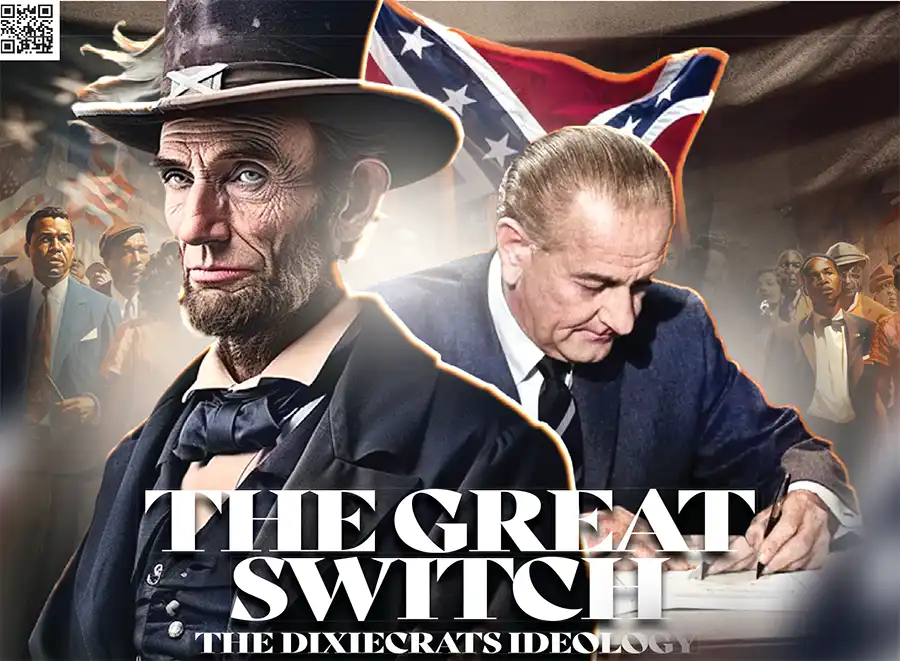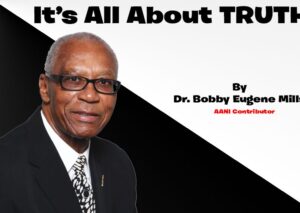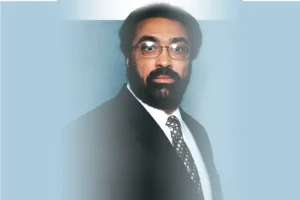The Democratic and Republican Parties have not always had the same ideals that they have today. In fact, America’s two dominant political parties have essentially flipped ideologies in the time since they were founded. The Democratic Party was founded in 1828 while the Republican Party dates back to 1854. In its early years, the Republican Party was considered quite liberal, while the Democrats were known for staunch conservatism. Th is is the exact opposite of how each party would be described today. This change did not happen overnight, however. Instead, it was a slow set of changes and policies that caused the great switch. At the outbreak of the Civil War, Republicans controlled the majority of northern states. Th e party sought to expand the United States, encouraged settlement of the west, and helped to fund the transcontinental railroad and state universities. Additionally, because of growing tension over slavery, many Republicans became abolitionists who argued against slavery.
Democrats represented a range of views but shared a commitment to Thomas Jefferson’s concept of an agrarian (farming) society. They viewed the central government as the enemy of individual liberty. Be-cause most Democrats were in southern states, they fought to keep slavery legal. As the war came to a close, the Republican Party controlled the government and used its power to protect formerly enslaved people and guarantee them civil rights. Th is included the three Reconstruction Amendments, which won Republicans the loyalty (and vote) of America’s Black population. Unsurprisingly, most Democrats disapproved of these measures.
However, a change had begun in the Republican Party following the Civil War. Northern industrialists had grown rich from the war, and many entered politics afterwards. These new wealthy politicians did not see much sense in supporting the rights of Black Americans when the nation was still largely white. By the 1870s, many in the Republican Party felt that they had done enough for Black citizens and stopped all efforts to reform the southern states. The south was left to the white Democrats and their oppressive policies towards Black citizens aft er the Compromise of 1877 ended Reconstruction. With the end of Reconstruction, the “Solid South” voted for Democratic presidential candidates for the next 44 years. Almost 60 years later, the Great Depression became a catalyst for a massive political shake up. Th e Republican Party had continued to be dominated by wealthy businessmen, which meant that they had come to favor laissez-faire policies that supported big business.
These policies were effective when the economy was booming, but were disastrous when it wasn’t. When the economy crashed in 1929, the Republican president, Herbert Hoover, opted not to intervene, earning him and his party the ire of the American public. Franklin D. Roosevelt, a Democrat, sensed the need for change. The Black Lives Matter Movement He campaigned on a promise of government intervention, financial assistance, and concern for the welfare of the people. He won the 1932 election by a landslide. It was FDR’s campaign policies that caused a major shift in party ideologies. Republicans opposed everything about FDR’s government. Primarily, they saw the growth of large government as harmful to the federalist foundation of the nation. Th is too has come to define the ideals of the Republican Party. The Civil Rights Movement Race and equality began to return to the center of politics in the 1950s and 1960s. Race did not necessarily fall into a party viewpoint at this point; instead, it was more of a regional issue.
Southern Democrats and Republicans both opposed the early Civil Rights Movement, while Northern Democrats and Republicans began to support legislation as the movement picked up steam. In 1964, Democratic president Lyn-don B. Johnson signed the Civil Rights Act into law. In the 1964 election, Republican candidate Barry Goldwater publicly opposed the new law, arguing that it expanded the power of the federal government to a dangerous level. It was this argument that led to a final, decisive switch. Black voters, who had historically been loyal to the Republican Party because of the 1866 Civil Rights Act, had already been switching to the Democratic Party. However, upon hearing Goldwater’s argument against the 1964 Civil Rights Act, the majority of Black voters left the Republican Party in favor of the Democrats. They saw the Democratic Party as advocates for equality and justice, while the Republicans were too concerned with keeping the status quo in America.
As the 60s and 70s continued, Democrats sought reform in other places, such as abortion and school prayer. White southern Democrats began to resent how much the Democratic Party was intervening into the rights of the people. By the 1980s, white southern Democrats had become Republicans, and the majority of the south was now Republican. The Republican Party now is sol-idly conservative while the Democratic Party is the liberal one.
How the ‘Party of Lincoln’ Won Over the Once Democratic South
The night that Democratic President Lyndon B. Johnson signed the Civil Rights Act of 1964, his special assistant Bill Moyers was surprised to find the president looking melancholy in his bedroom. Moyers later wrote that when he asked what was wrong, John-son replied, “I think we just delivered the South to the Republican party for a long time to come.” It may seem a crude remark to make aft er such a momentous occasion, but it was also an accurate prediction. To understand some of the reasons the South went from a largely Democratic region to a primarily Republican area today, just follow the decades of debate over racial issues in the United States. e Republican party was originally founded in the mid-1800s to oppose immigration and the spread of slavery, says David Goldfield, whose new book on American politics, Th e Gift ed Generation: When Government Was Good, comes out in November. “The Republican party was strictly a sectional party, meaning that it just did not exist in the south,” he says “The South couldn’t care less about immigration.” But it
did care about preserving slavery.
After the Civil War, the Democratic party’s opposition to Republican Re-construction legislation solidified its hold on the South. “The Democratic party came to be more than a political party in the South—it came to be a defender of a way of life,” Goldfield says. “And that way of life was the restoration as much as possible of white supremacy … The Confederate statues you see all around were primarily erected by Democrats.” Though some Democrats had switched to the Republican party prior to this, “the defections became a flood” aft er Johnson signed these acts, Goldfield says. “And so the political parties began to reconstitute themselves.”
e change wasn’t total or immediate. During the late 1960s and early ‘70s, white Southerners were still transitioning away from the Democratic party (newly enfranchised black Southerners voted and continue to vote Democratic). And even as Republican Richard Nixon employed a “Southern strategy” that appealed to the racism of Southern white voters, former Alabama Governor George Wallace (who’d wanted “segregation now, segregation tomorrow and segregation for-ever”) ran as a Democrat in the 1972 presidential primaries. Ronald Regan became president in 1980 the republican party’s hold on white southerner’s was fi rm. Today, the Republican party remains the party of the South. It’s an ironic outcome considering that a cen-tury ago, white Southerners would’ve never considered voting for the party of Lincoln.
Southern strategy
Southern strategy, in the political history of the United States, a campaign strategy of the Republican Party, actively pursued from the 1960s, that initially sought to increase and preserve support from white voters in the South by subtly endorsing racial segregation, racial discrimination, and the disenfranchisement of Black voters. The strategy has also involved directly promoting conservative views on immigration, taxes, social welfare programs, law enforcement, and states’ rights.









